Tire and Wheel Removal and Installation Excessively Tight Wheels
Removal Procedure
Caution: If penetrating oil gets on the vertical surfaces between the wheel and the rotor or drum it could cause the wheel to work loose as the vehicle is driven, resulting in loss of control and an injury accident.
Notice: Never use heat to loosen a tight wheel. It can shorten the life of the wheel, studs, or hub and bearing assemblies. Wheel nuts must be tightened in sequence and to the specified torque to avoid bending the wheel or rotor.
Removing wheels can be difficult because of foreign material or a tight fit between the wheel center hole and the hub or rotor. Excessive force, such as hammering on the wheel or tire, can cause damage. slightly tapping the tire side wall with a rubber mallet is acceptable. Wheel removal should be done in the following way:
- Tighten all wheel nuts on the affected wheel.
- Loosen each wheel nut two turns.
- Rock the vehicle from side to side in order to loosen the wheel.
- Apply quick, hard jabs to the brake pedal in order to loosen the wheel. If this does not loosen the wheel, rock the vehicle from side to side, using the body weight of one or more persons.
- Repeat this procedure if the wheel does not break free.
You can also rock the vehicle from front to back, allowing the vehicle several feet of movement in each direction.
Removal Procedure
- Raise the vehicle. Support the vehicle with safety stands.
- Remove the hub cap if equipped. Refer to Aluminum Wheel Hub Cap Replacement in Tires and wheels.
- For the 1500 Series (five stud), remove the wheel nuts from the tire and wheel assembly.
- For the 2500 Series (six stud), remove the wheel nuts from the tire and wheel assembly.
- For the 2500 Series (eight stud), remove the wheel nuts from the tire and wheel assembly.
- For the 3500 Series (eight stud, single wheel), remove the wheel nuts from the tire and wheel assembly.
- For the 3500 Series (dual wheels), remove the wheel nuts from the tire and wheel assembly.
- Remove the tire and wheel assembly from the vehicle.

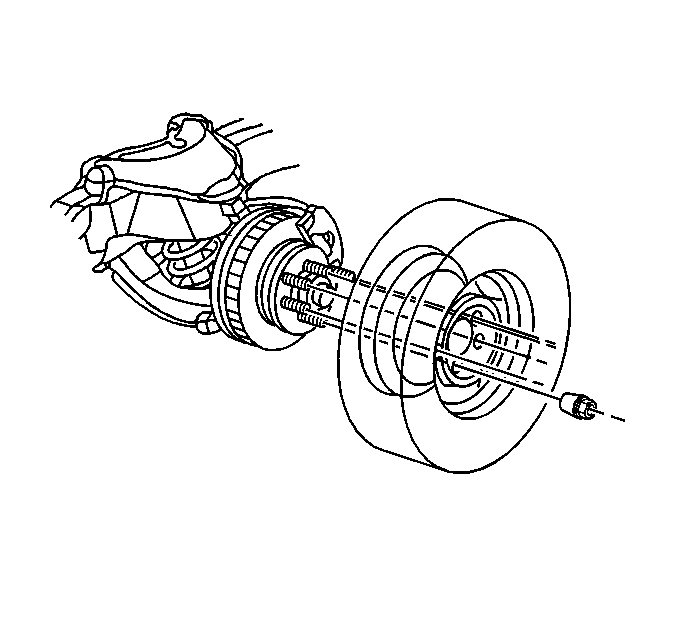
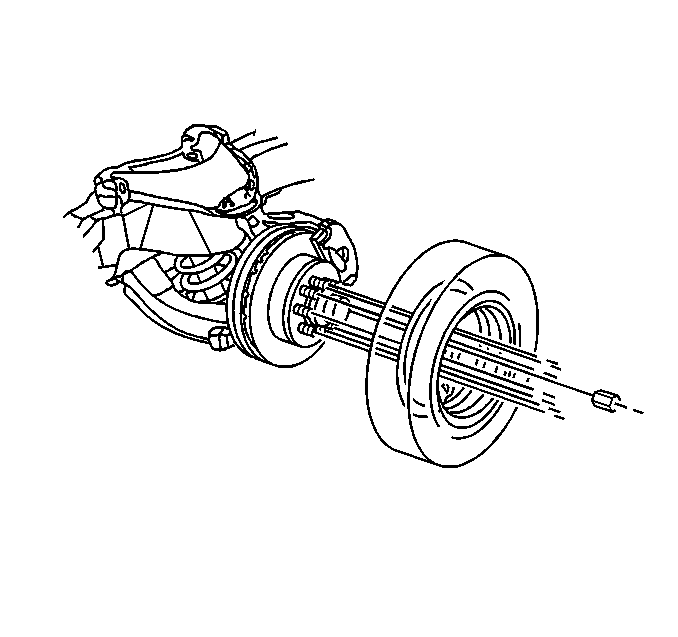
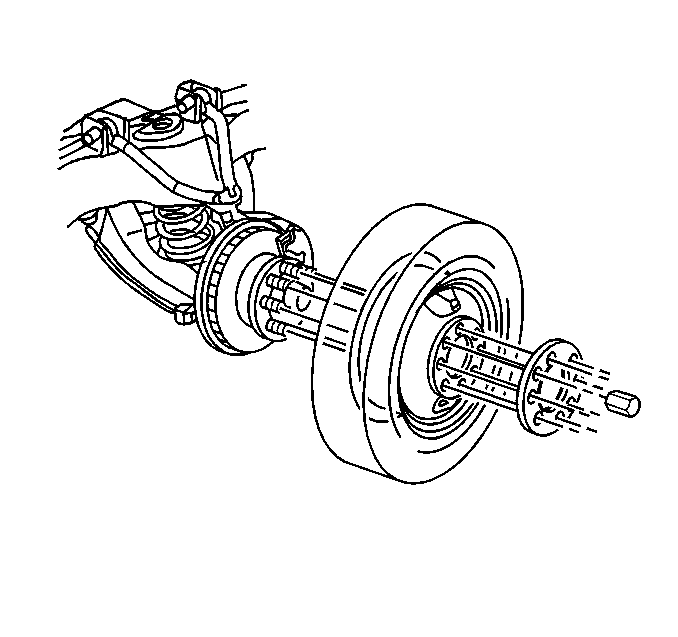
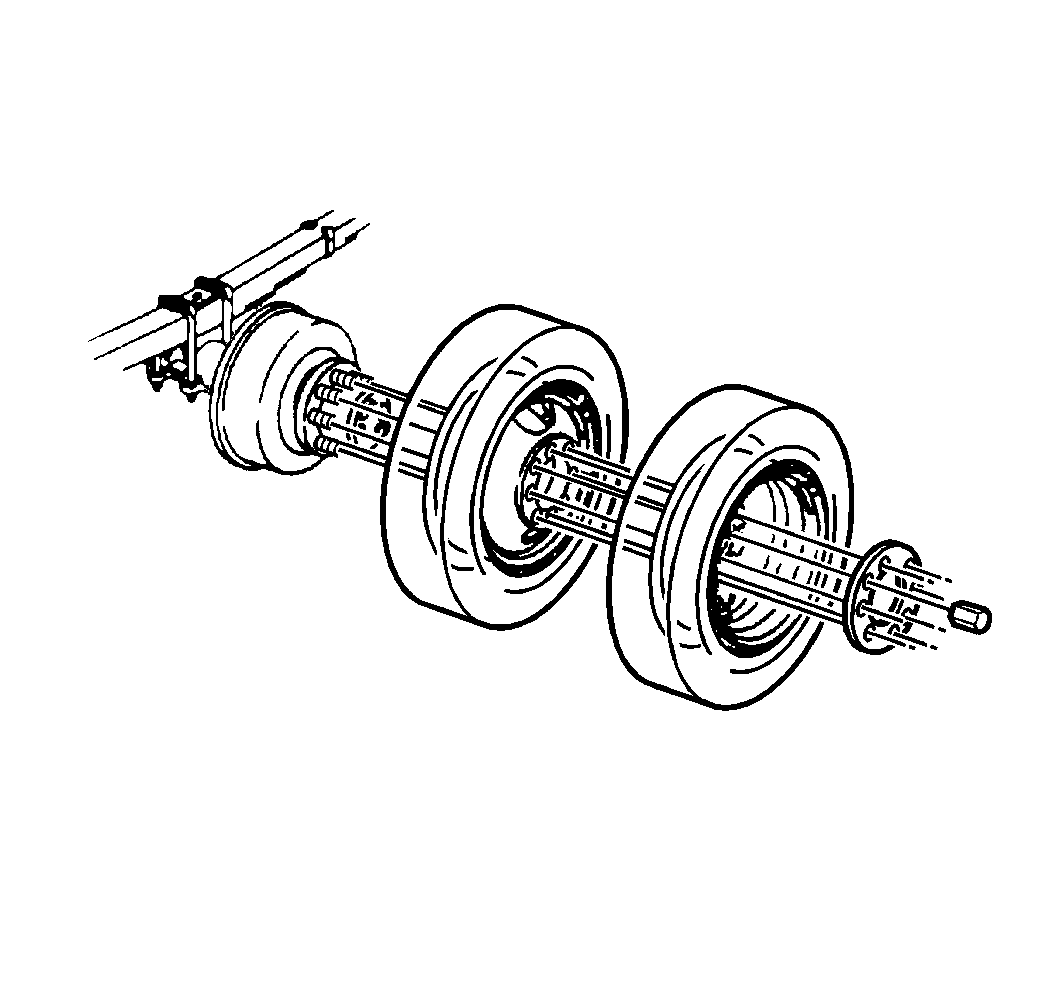
Installation Procedure
Notice: Before installing wheels, remove any build-up of corrosion on the wheel mounting surface by scraping and wire brushing. Installing wheels without good metal-to-metal contact at the mounting surfaces can cause wheel bolts or nuts to loosen, which can later allow a wheel bolt or nut to come off while the vehicle is moving. Wheel bolts or nuts must be tightened in sequence and to proper torque to avoid bending the wheel, brake drum or rotor.
Tools Required
J 39544-KIT (Use with a pneumatic impact).
Caution: If you are replacing the wheel(s), the wheel stud(s), the wheel nut(s) or the wheel bolt(s), install only new GM original equipment parts. Installation of used parts or non-GM original equipment parts may cause the wheel to loosen, loss of tire air pressure, poor vehicle handling and loss of vehicle control resulting in personal injury.
Notice: The use of non-GM original equipment wheels may cause:
• Damage to the wheel bearing, the wheel fasteners and the wheel • Tire damage caused by the modified clearance to the adjacent vehicle
components • Adverse vehicle steering stability caused by the modified
scrub radius • Damage to the vehicle caused by the modified ground clearance • Speedometer and odometer inaccuracy
- For the 1500 Series (five stud), install the wheel and the tire assembly in position on the hub/rotor.
- For the 2500 Series (six stud), install the wheel and tire assembly in position on the hub/rotor.
- For the 2500 Series (eight stud), install the wheel and tire assembly in position on the hub/rotor.
- For the 3500 Series (eight stud, single wheel), install the wheel and tire assembly in position on the hub/rotor.
- For the 3500 Series (dual wheels), install the wheel and tire assembly in position on the hub/rotor
- Turn the wheel until one nut is at the top of the bolt circle. Tighten the top nut securely, but do not tighten to specification.
- Loosely tighten the remaining nuts in a criss/cross pattern in order to minimize runout.

Loosely install the wheel nuts.

Loosely install the wheels nuts.

Loosely install the wheels nuts.

Loosely install the wheels nuts.

Loosely install the wheels nuts.
Notice: A torque wrench or J 39544 must be used to ensure that wheel nuts are tightened to specification. Never use lubricants or penetrating fluids on wheel stud, nuts, or mounting surfaces, as this can raise the actual torque on the nut without a corresponding torque reading on the torque wrench. Wheel nuts, studs, and mounting surfaces must be clean and dry. Failure to follow these instructions could result in wheel, nut, and/or stud damage.
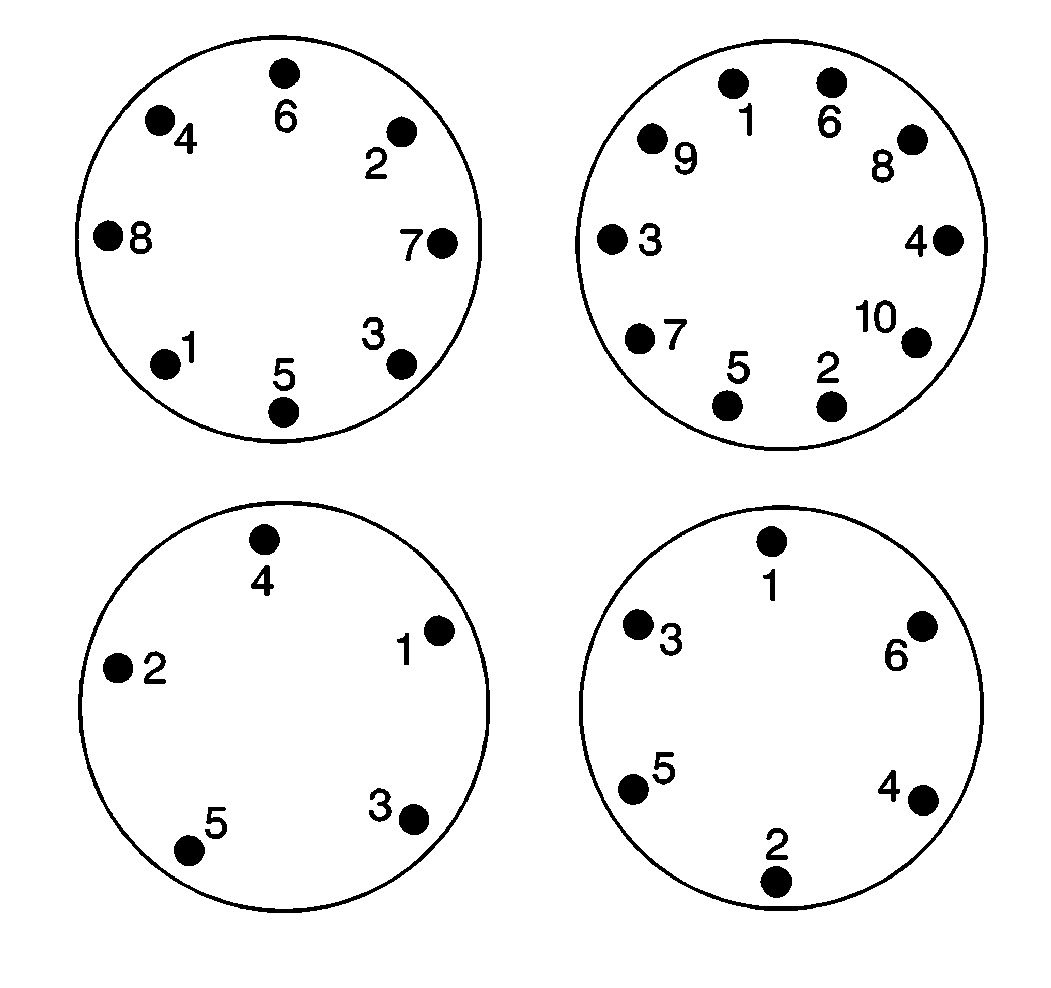
Notice: Use the correct fastener in the correct location. Replacement fasteners must be the correct part number for that application. Fasteners requiring replacement or fasteners requiring the use of thread locking compound or sealant are identified in the service procedure. Do not use paints, lubricants, or corrosion inhibitors on fasteners or fastener joint surfaces unless specified. These coatings affect fastener torque and joint clamping force and may damage the fastener. Use the correct tightening sequence and specifications when installing fasteners in order to avoid damage to parts and systems.
Tighten
| • | Tighten the nuts to 190 N·m (140 lb ft). |
| • | Tighten the nuts evenly and alternately in order to avoid excessive runout. |
| • | Remove the safety stands. |
| • | Lower the vehicle. |
